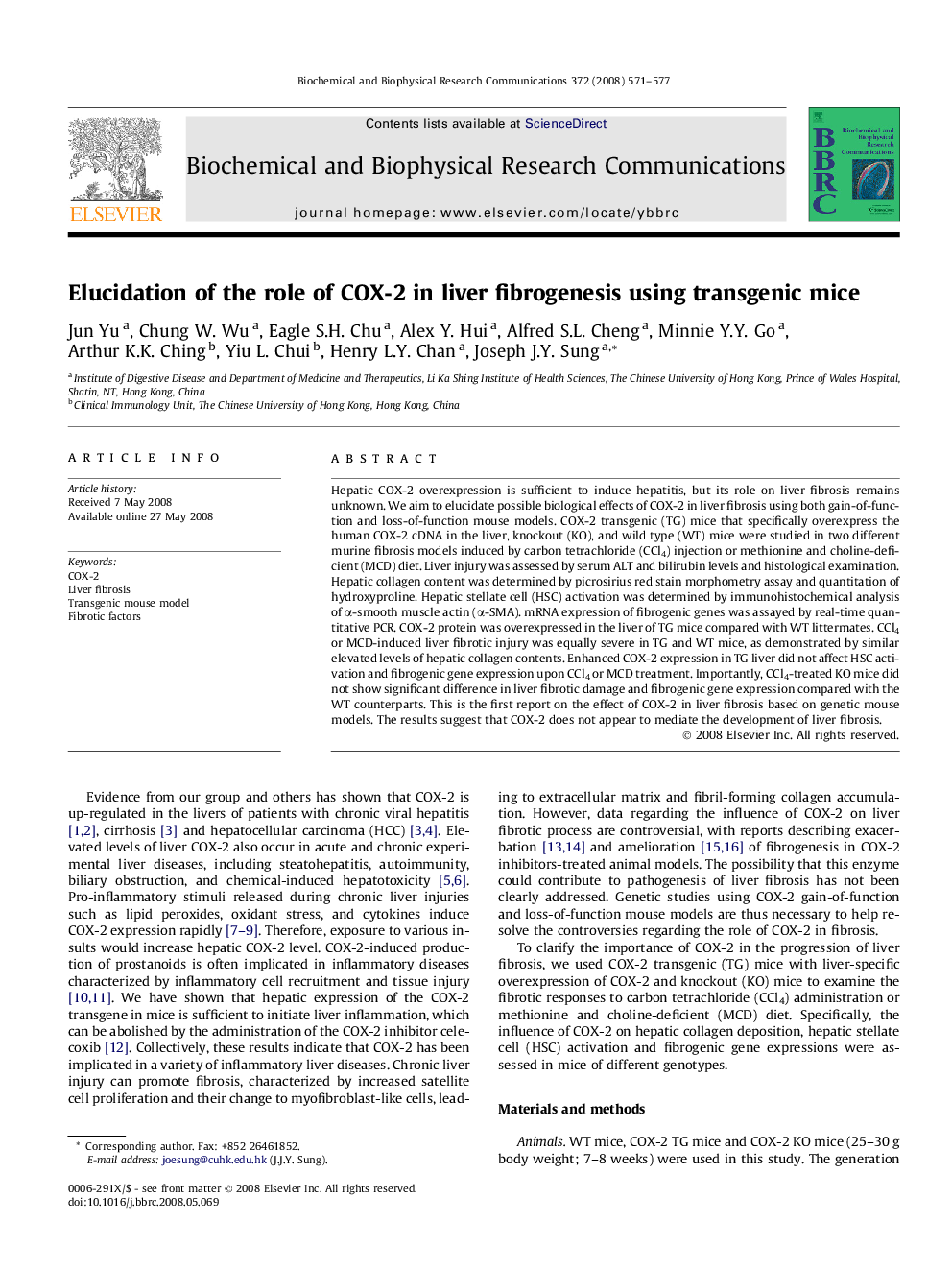| Article ID | Journal | Published Year | Pages | File Type |
|---|---|---|---|---|
| 1935321 | Biochemical and Biophysical Research Communications | 2008 | 7 Pages |
Hepatic COX-2 overexpression is sufficient to induce hepatitis, but its role on liver fibrosis remains unknown. We aim to elucidate possible biological effects of COX-2 in liver fibrosis using both gain-of-function and loss-of-function mouse models. COX-2 transgenic (TG) mice that specifically overexpress the human COX-2 cDNA in the liver, knockout (KO), and wild type (WT) mice were studied in two different murine fibrosis models induced by carbon tetrachloride (CCl4) injection or methionine and choline-deficient (MCD) diet. Liver injury was assessed by serum ALT and bilirubin levels and histological examination. Hepatic collagen content was determined by picrosirius red stain morphometry assay and quantitation of hydroxyproline. Hepatic stellate cell (HSC) activation was determined by immunohistochemical analysis of α-smooth muscle actin (α-SMA). mRNA expression of fibrogenic genes was assayed by real-time quantitative PCR. COX-2 protein was overexpressed in the liver of TG mice compared with WT littermates. CCl4 or MCD-induced liver fibrotic injury was equally severe in TG and WT mice, as demonstrated by similar elevated levels of hepatic collagen contents. Enhanced COX-2 expression in TG liver did not affect HSC activation and fibrogenic gene expression upon CCl4 or MCD treatment. Importantly, CCl4-treated KO mice did not show significant difference in liver fibrotic damage and fibrogenic gene expression compared with the WT counterparts. This is the first report on the effect of COX-2 in liver fibrosis based on genetic mouse models. The results suggest that COX-2 does not appear to mediate the development of liver fibrosis.
